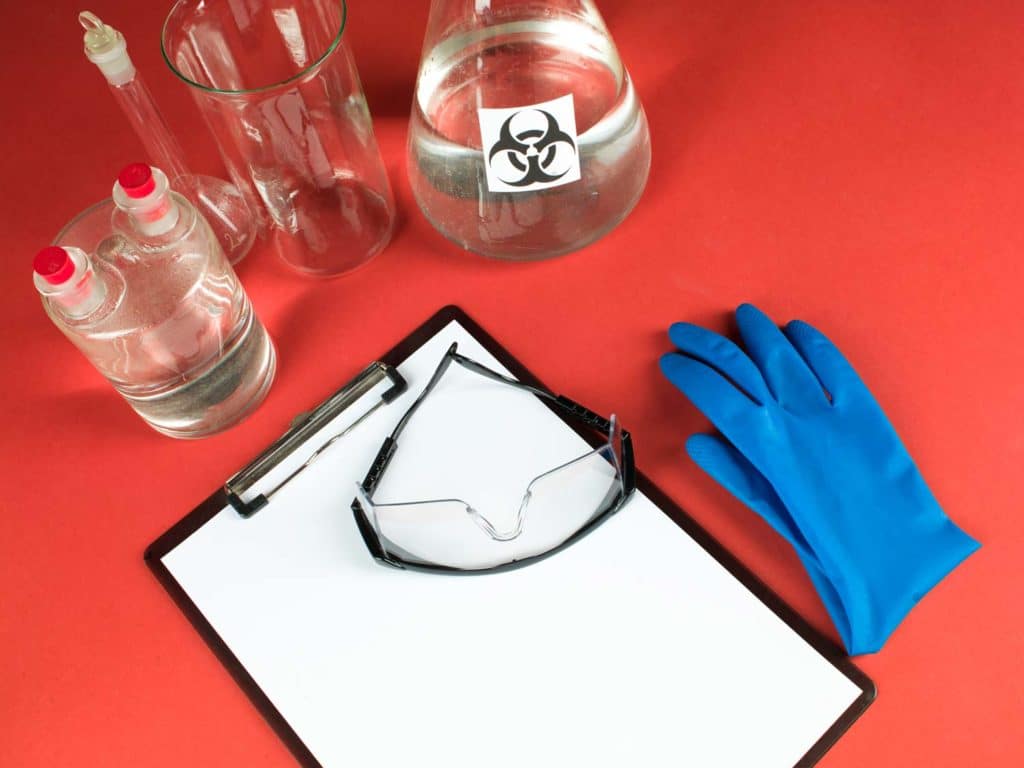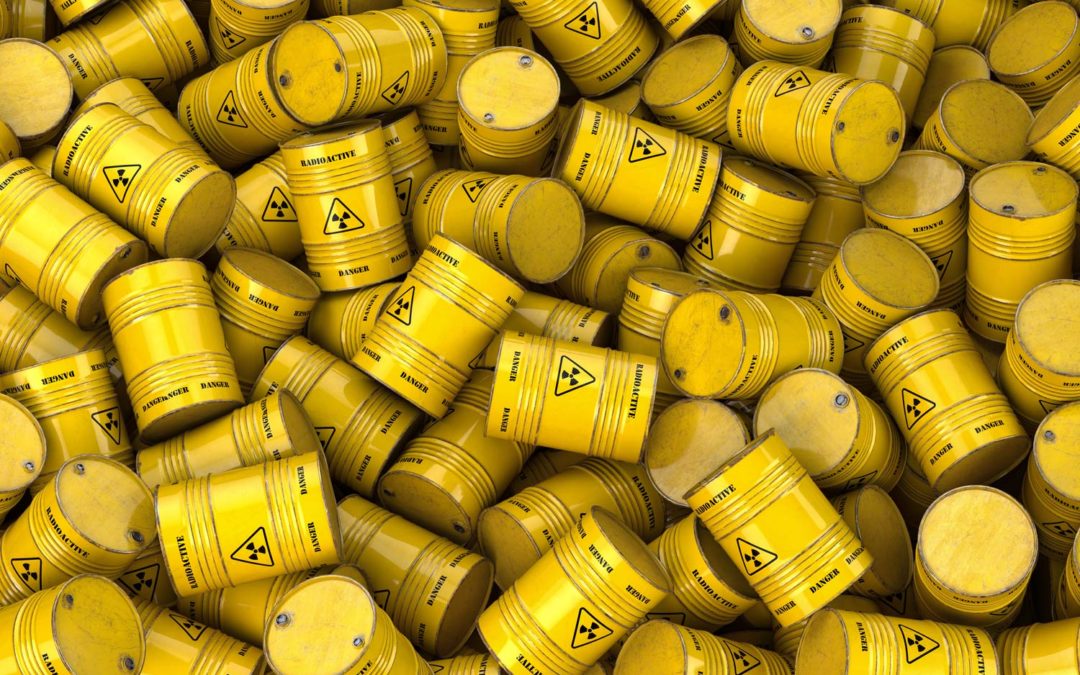Being exposed to hazardous material can lead to a variety of both long- and short-term health issues. Cancer, burns, rashes, blindness, and other adverse health effects are all possible. The best way to avoid a dangerous situation is to be trained in proper handling procedures and safety measures. Everyone who comes in contact with chemicals, radiation, flammable liquids, gases, corrosives, and anything else deemed hazardous needs to be aware of the risks and how to minimize them. But with or without training, accidents happen.
With every spill, leak, or accidental exposure, there should be a detailed plan for how to handle the situation, limit contamination, and treat anyone who has been exposed. The time to make those plans is long before the accident happens. Only through thorough preparation will you and your business be able to safely handle the situation.
Here’s a breakdown of what you need to do when exposed to hazardous material.
Identify Your Hazardous Materials

The first step in safely handling a potential emergency is to know exactly what materials are being/will be handled. The most common types of hazardous materials are chemicals, gases, explosives, corrosives, biological substances, flammable liquids, and flammable solids.
It’s important to identify what kind of hazardous material you’re dealing with and know all potential risks to both human health and the environment. The degree of risk associated with being exposed to hazardous material depends on the substance.
And remember, hazardous materials aren’t always as obvious as they seem. Most industrial, agricultural, medical, and even automotive businesses handle hazardous materials on a daily basis.
Know Your Plan
When an accident happens, acting quickly and efficiently will help limit effects on human health, the environment, and a business’s bottom line. Your biggest hurdle is that every situation is different. It will depend on a long list of factors including what material you’ve been exposed to, how much of it has spilled, leaked, or splashed, and what/who is in the nearby area.
To start, look for hazard pictograms, statements, or single words on the hazardous substance. These are required by law and can help direct you on what to do. If someone is obviously hurt or the contamination is wide-spread, immediately call for emergency services. Make sure to mention that you’re dealing with hazardous materials so emergency responders aren’t also put at risk.
Here are a few basic action plans for when you’re exposed to hazardous material.
From a Distance
If you observe a possible hazardous material exposure from a distance, your first action should be to make sure you’re far away. You want to be upwind, uphill, and upstream from all potential risks. The literal “rule of thumb” in these situations is that if you can’t cover the entire incident area by holding up your thumb and looking at it from arm’s length, you need to get farther away.
It can be tempting to rush toward the accident to help those closer who have been exposed to hazardous materials, but putting yourself in danger will not help the situation. Always choose to be cautious and wait for professional responders. If you’re already exposed and so is someone else, only then is it safe to offer assistance.
Immediate Vicinity Exposure
Another natural instinct is to run away from the accident area as soon as you’ve been exposed. But once you’re exposed, your initial responsibility is to prevent further contamination. Leaving the scene will only spread the dangerous substance and increase the risk of other people being exposed. It’s best to stay at the scene until you have been properly decontaminated.
Hazardous Liquid Splashed in Eyes
One of the most common hazardous exposure accidents is when an acid, chemical, or another kind of dangerous liquid is splashed into a person’s face and eyes. It’s important to act quickly to save the eyes from blindness.
Find the nearest water source (or better yet, emergency eyewash) and gently flush out the eyes for at least 15 minutes. To ensure you’re getting the full effect of the rinse, force the eyes to stay open and encourage the injured person to move their eyes in all directions while they’re being rinsed. Contact lenses need to be taken out. Even if there doesn’t seem to be permanent damage, always seek medical attention.
Chemical Bodily Contact
When you’re exposed to hazardous material, the effects can be immediate, but symptoms of exposure can also take time to manifest. The first step in mediating the risk is to confine movement as to not spread the contamination. Limit the number of people who offer assistance and follow these precautions.
- Do not attempt to wipe the chemical off of clothes. Instead, go directly to a safety shower or other water source.
- Remove clothes and thoroughly rinse the area for at least 15 minutes.
- All contaminated clothing, shoes, jewelry, etc., must be placed in a plastic bag and sealed shut.
- Obtain medical attention and contact a professional hazardous material management company.
Biological Spill and Bodily Contact
A biological hazardous material could be sewage, bodily fluids, mold, harmful plants, animal waste, or anything that comes from a living source. Exposure leads to the risk of disease and environmental contamination. Here’s what to do in case of a biological spill on a person’s body.
- Remove all contaminated clothing including jewelry and shoes.
- Thoroughly wash the exposed area with soap and water.
- Put all contaminated items in a sealed container.
- Alert a hazardous material management company and obtain medical attention as needed.
Radiation Exposure
One of the biggest dangers of radiation is how easily it spreads. A person who has been exposed to radiation can easily put other people at risk. If you work in a field that regularly uses radiation, it’s important to know what to do in an emergency.
- Quarantine the area and confine the movement of all personnel who could have been exposed to hazardous material.
- Remove all contaminated clothing and immediately rinse it with water. Place it in a sealed bag.
- Thoroughly rinse exposed skin with water.
- Report the incident to the appropriate authorities and obtain medical attention.
Once you have a handle on the immediate aftermath of a hazardous waste exposure, the next step is to remove the waste and ensure the area is safe for future use. To do this, it’s important to hire a professional service that is trained and certified in proper hazardous materials management. Hayward Environmental Contracting offers comprehensive solutions for every hazardous material situation. We respond quickly to emergency incidents and offer efficient, cost-effective services.
Call us today to learn more about what to do if your business is ever exposed to hazardous material.

